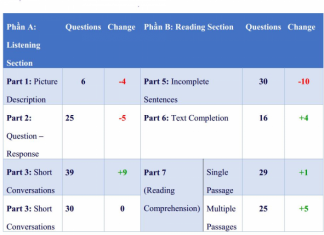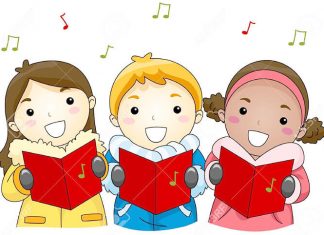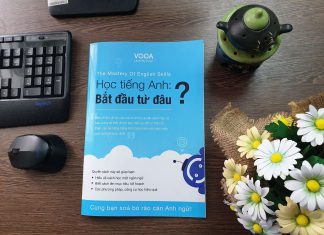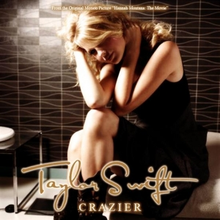Trong bài thi IELTS Speaking, nói về một ngày lễ của đất nước thường được đưa ra dưới phần thi part 2. Đối với thí sinh Việt, nói về ngày Tết cổ truyền – Tet holiday in Vietnam là chọn lựa ưu tiên do đây là lễ hội lớn và có nhiều ý đề nói nhất. Qua bài viết này, ENG4 sẽ cung cấp cho bạn từ vựng, một số câu chúc Tết ý nghĩa và bài chiếc hay, để dùng cho dạng chủ đề nằm trong dưới 10 Chủ đề IELTS Speaking part 2 này nhé.
Từ vựng chủ đề Tet holiday in Vietnam
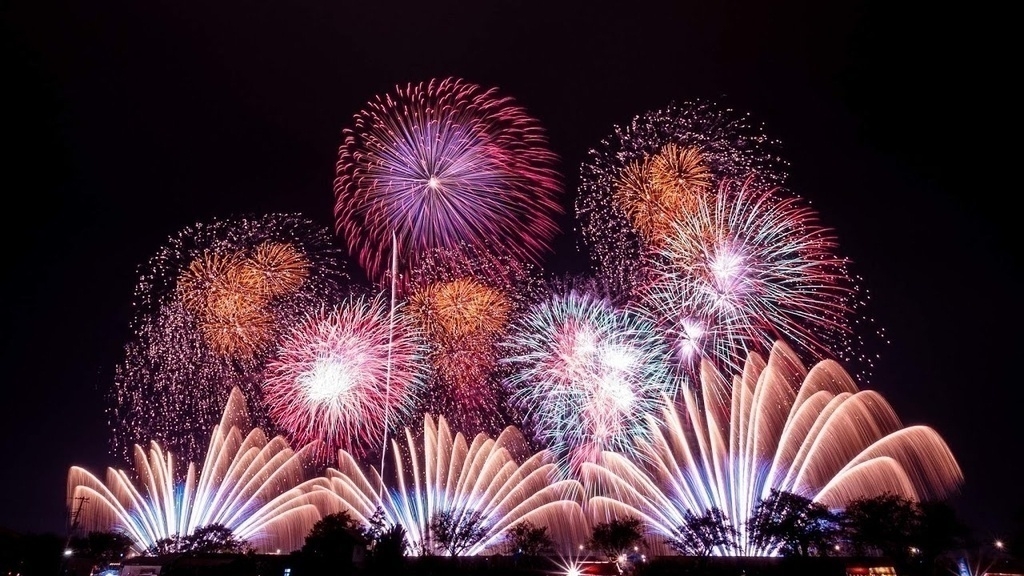
Crucial moments – Những thời khắc quan trọng
- New Year’s Eve = Giao Thừa
- Tet holiday: Ngày lễ Tết
- The New Year: Tân niên
- Lunar New Year: Tết Nguyên Đán
- Before New Year’s Eve: Tất niên
- Fireworks: Pháo hoa
Foods – Các món ăn ngày Tết
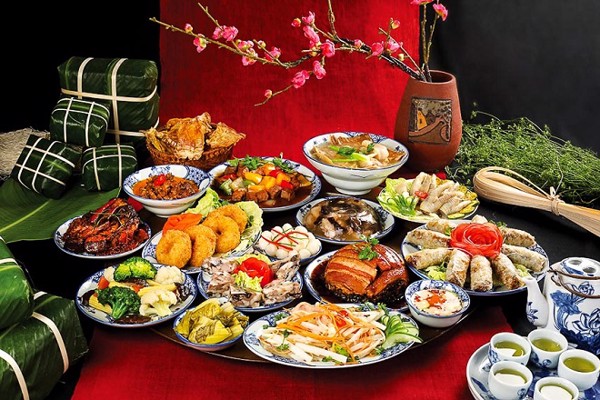
- Chung Cake / Square glutinous rice cake: Bánh Chưng
- Dried candied fruits: Mứt
- Fatty pork: Mỡ lợn
- Five – fruit tray: Mâm ngũ quả
- Dried bamboo shoots: Măng khô
- Jellied meat: Thịt đông (món ăn phổ biến tại miền Bắc vào ngày Tết)
- Lean pork paste: Giò lụa
- Pickled onion: Dưa hành
- Pickled small leeks: Củ kiệu
- Pig trotters: Chân giò
- Roasted watermelon seeds: Hạt dưa
- Sunflower seeds: Hạt hướng dương
- Pumpkin seeds: Hạt bí
- Cashew nuts: Hạt điều
- Pistachio nuts: Hạt dẻ cười
- Sticky rice: Gạo nếp
- Lotus seeds: mứt hạt sen
Hoạt động ngày Tết

- Spring festival: Hội xuân
- Family reunion: Cuộc đoàn tụ gia đình
- Calligraphy pictures: Thư pháp
- Decorate the house: Trang trí nhà cửa
- Dragon dancers: Múa lân
- Dress up: Ăn diện
- Exchange New year’s wishes: Chúc Tết nhau
- Firecrackers: Pháo (Pháo truyền thống, đốt nổ bùm bùm ý)
- Go to pagoda to pray for: Đi chùa để cầu …
- Visit relatives and friends: Thăm bà con bạn bè
- Play cards: Đánh bài
- Worship the ancestors: Thờ cúng tổ tiên
- Go to flower market: Đi chợ hoa
- To return to hometown: Về quê
- Bid their ancestor farewell: Đưa ông bà
Biểu tượng Tết
- Five – fruit tray: Mâm ngũ quả (5 dòng trái cây dưới mâm ngũ quả ngày Tết: mãng cầu, sung, dừa, đu đủ, xoài)
- Annona: Mãng cầu
- Figs: Quả sung
- Coconut: Dừa
- Pawpaw (papaya): Đu đủ
- Mango: Xoài
- Apricot blossom: Hoa mai
- Peach blossom: Hoa đào
- Kumquat tree: Cây quất
- Marigold: Cúc vạn thọ
- Chrysanthemum: Cúc đại đóa
- Orchid: Hoa lan
- Paperwhite: Hoa thủy tiên
- The New Year tree: Cây nêu
- Water melon: Dưa hấu
Các từ vựng khác về chủ đề Tết
- Lunar / lunisolar calendar: Lịch Âm lịch
- Rekindling love and bonding: Nhen nhóm ngọn lửa tình yêu và sự đoàn tụ
- First caller: Người xông đất
- Lucky money: Tiền lì xì
- Ritual: Lễ nghi
- Superstitious: Mê tín
- Altar: Bàn thờ
- Health, Happiness, Luck & Prosperity: “Khỏe mạnh, Hạnh phúc, May mắn, & Thịnh vượng”
- Incense: Hương trầm
- Parallel: Câu đối
- Sweep the floor: Quét nhà
- Taboo: Điều cấm kỵ
- The kitchen god: Táo quân
- D: Niềm vui sướng, hân hoan
- Freshness: Tươi mới
Bài mẫu Talk about Tet holiday in Viet Nam – IELTS Speaking Part 2
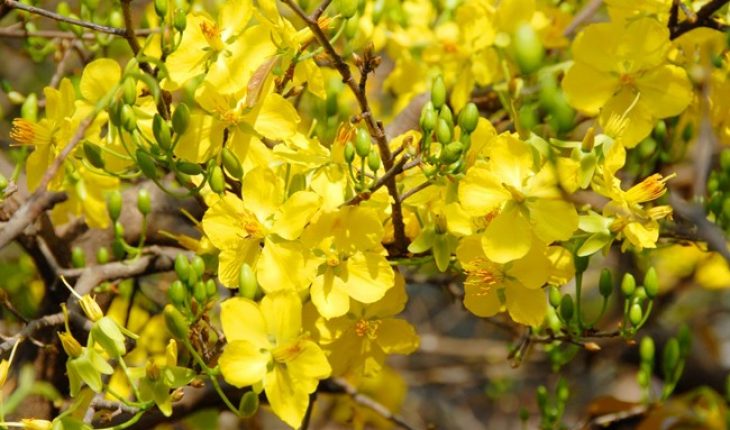
Describe a national festival in your country
You should say:
Sample 1:
If you ask me about a famous festival in Vietnam, I will definitely talk about Tet Holiday, which is also known as Lunar New Year holiday in Vietnam.
It usually occurs at the end of January and lasts for 3 days. Tet holiday in Vietnam is usually in honor of the departure of the previous year and an occasion to welcome the new year with many blessings. On Tet holiday, we will have family unions to catch up with each other. Besides, some families enjoy this festival by preparing traditional food such as Vietnamese square cake, dried candied fruit, braised pork and eggs, etc. and decorating the house with parallel sentences and peach or apricot blossoms.
Especially, for children, I think they look forward to Tet holiday because they can receive lucky money from adults as a way to give them wishes for the new year. For adults, it is an occasion on which they are able to do the spring cleaning and make appetizing food to worship the ancestors.
I would say in this days and age, Tet has lost its original spirit and most adults treat it as a normal holiday in which they can have 2 weeks off to blow off some steam and release stress.
However, to me, Tet holiday is still a distinct festival of Vietnam. Whenever this holiday comes, I feel a strong sense of belonging because it reminds me of how diverse our culture can be with different rituals and food. Moreover, I think if Tet holiday didn’t exist, many family members would drift apart due to the hustle and bustle of life. However, since we have Tet, everyone will have at least one or two days to have family gatherings and tighten the bonds with other members.
So I guess that’s all I want to chia sẻ about Tet in Vietnam.
Sample 2:
Tet Nguyen Dan or Tet is the most important and popular holiday and festival in Vietnam. It is the Vietnamese New Year marking the arrival of spring based on the Lunar calendar, a lunisolar calendar. The name Tet Nguyen Dan is Sino-Vietnamese for Feast of the very First Morning.
Tet takes place from the first day of the first month of the Lunar calendar (around late January or early February) until at least the third day. Many Vietnamese prepare for Tet by cooking special holiday foods and cleaning their house. There are a lot of customs practiced during Tet such as visiting a person’s house on the first day of the new year (xông nhà), ancestral worship, wishing New Year’s greetings, giving lucky money to children and elderly people and opening a shop.
Tet is also an occasion for pilgrims and family reunions. During Tet, Vietnamese visits their relatives and temples, forgetting the troubles of the past year and hoping for a better upcoming year. They consider Tet to be the first day of spring and the festival is often called Hội xuân (spring festival).
Like other Asian countries, Vietnamese believe that the color of red and yellow will bring good fortune, which may explain why these colors can be seen everywhere in Lunar New Year. People consider what they do on the dawn of Tet will determine their fate for the whole year, hence people always smile and behave as nice as they can in the hope for a better year.
Vietnamese people usually return to their families during Tet. Some return to worship at the family altar or visit the graves of their ancestors in their homeland. Although Tet is a national holiday among all Vietnamese, each region and religion has its own customs.
Tet in the three Vietnamese regions can be divided into three periods, known as Tất Niên (Before New Year’s Eve), Giao Thừa (New Year’s Eve), and Tân Niên (the New Year), representing the preparation before Tet, the eve of Tet, and the days of and following Tet, respectively. All of these customs are to celebrate Tet in Vietnam.
Before New Year’s Eve
This period begins one or two weeks before the actual celebration. The general atmosphere leading up to Tet is in the bustle of shopping, decorating the home, cooking traditional Tet food and waiting for relatives to return home. People try to pay off their debts in advance so that they can be debt-free on Tet. Parents buy new clothes for their children so that the children can wear them when Tet arrives.
In the days leading up to Tet, the streets and markets are full of people. As the shops will be closed during Tet, everyone is busy buying food, clothes, and decorations for their house.
Vietnamese families usually have a family altar, to pay respect to their ancestors. Vietnamese families have a tray of five different fruits on their altar called “Ngũ Quả” (five fruits type).
During Tet the altar is thoroughly cleaned and new offerings are placed there. Traditionally, the three kitchen guardians for each house (Ông Táo) (Kitchen God) return to heaven on the 23rd day of the twelfth month by lunar calendar to give his annual report on family members to the Jade Emperor. Their departure is marked by a modest ceremony where the family offers sacrifices for them to use on their journey.
In the days leading up to Tet, each family cooks special holiday foods such as bánh chưng and bánh dầy. Preparations for these foods are quite extensive. Family members often take turns to keep watch on the fire overnight, telling each other stories about Tet of past years. One of very popular traditional food in Tet is Mut (candied fruits) which is not served in the meals but a snack to welcome guests visiting house and always kept in beautiful boxes and placed at the table in the living room.
The New Year
The first day of Tet is reserved for the nuclear family. Children wear their new clothes, give their elders the traditional Tet greetings before receiving the lucky money from them in exchange.
The traditional greetings are “Chúc Mừng Năm Mới” (Happy New Year) and “Cung Chúc Tân Xuân” (gracious wishes of the new spring). People also wish each other prosperity and luck. Common wishes for Tết include:
Sống lâu trăm tuổi (long life of 100 years): used by children for elders. Traditionally, everyone is one year older on Tet, so children would wish their grandparents health and longevity.
An khang thịnh vượng (security, good health, and prosperity)
Vạn sự như ý (may myriad things go according to your will)
Sức khỏe dồi dào (Plenty of health)
Cung hỉ phát tài (congratulations and be prosperous)
Tiền vô như nước (many money flows in like water): used informally
Since the Vietnamese believe that the very first visitor a family receives in the year determines their fortune for the entire year, a person of good temper, morality and success will be the lucky sign for the host family and be invited first into the house. This special activity is called xông đất or xông nhà, which is one of the most important rituals during Tet. According to Vietnamese tradition, if good things come to the family on the first day of the lunar New Year, the entire following year will also be full of blessings.
Sweeping during Tet is a taboo since it symbolizes sweeping the luck away. It is also a taboo for anyone who experienced a recent loss of a family member to visit anyone else during Tết.
During subsequent days, people visit relatives and friends. Traditionally but not strictly, the second day of Tet is usually reserved for friends, while the third day is for teachers, who command respect in Vietnam. Local Buddhist temples are popular spots as people like to give donations and to get their fortunes told during Tet.
Vietnamese families also buy home peach blossom trees, kumquat trees, and orange trees. They also buy flowers to decorate their homes such as chrysanthemums or orchids. They plant these flowers and put them into beautiful pots in front of or inside the house.
At Tet every house is usually decorated by Ochna integerrima (in the central and south Vietnam) or peach flower (in the North). In the north or central, the kumquat tree is a popular decoration for the living room during Tet. Its many fruits symbolize the fertility and fruitfulness that the family hopes for in the coming year.
Above all, time to Tet is counting down, so if you want to experience this extremely special event at least once in a life, just pack up your luggage and reserve a Lunar New Year trip in Vietnam!
Mong rằng với những chia sẻ ở trên sẽ giúp bạn có 1 phần thi Ielts thành công.



